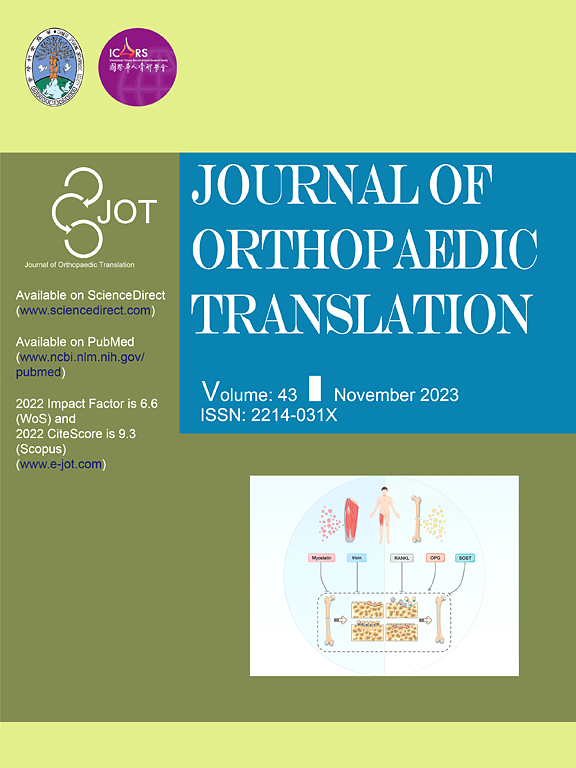高体重指数导致的膝骨性关节炎的趋势、不平等和基于时间序列的预测:来自2021年全球疾病负担的研究结果
IF 5.9
1区 医学
Q1 ORTHOPEDICS
引用次数: 0
摘要
高身体质量指数(BMI)已被证明是膝骨关节炎(KOA)的危险因素。以前的研究已经检查了多个关节(包括髋关节、膝关节和手部)骨关节炎的全球或区域负担。然而,对于高BMI导致的KOA的全球负担,目前还没有全面的分析和预测。方法从全球疾病负担(GBD) 2021中提取1990 - 2021年高BMI导致的KOA疾病负担。分析了全球、区域和国家层面的趋势,并进行了亚组分析。采用结合点回归、年龄-时期-队列模型、分解分析、跨国不平等等方法从多个维度分析疾病负担趋势。采用基于时间序列的自回归综合移动平均(ARIMA)模型对未来20年的负荷进行了预测。结果从1990年到2021年,KOA患者高BMI的危险因素归因从25.44% (95% CI:−2.38% ~ 48.66%)增加到33.52% (95% CI:−3.38% ~ 61.92%)。在全球、地区和全国范围内,高BMI导致的KOA负担急剧增加。2000 - 2005年,除高社会人口指数(SDI)地区的人口负担下降外,其他所有时期和地区的人口负担均呈上升趋势。年龄、队列和时期对疾病负担有显著影响。人口增长和流行病学变化都对负担的增加起了积极作用。经济和社会发展导致差距扩大,低sdi国家表现出更好的健康结果。ARIMA模型显示,到2041年,全球高BMI导致的KOA负担将持续上升。结论在过去的30年里,高BMI导致的skoa在全球、地区和国家都造成了巨大的负担,并且有明显的增加。这些预测表明,未来20年全球负担将进一步增加。需要采取措施进行有针对性的预防性干预。高BMI是KOA的重要危险因素。高BMI导致的KOA疾病负担在过去30年中显著增加。这一负担集中在经济发达地区,尽管较不发达地区的增长率超过发达地区。这项研究表明,针对不同社会经济背景下的疾病模式的有针对性的干预措施对于减轻高BMI导致的KOA负担至关重要。此外,有必要对女性的疾病负担给予更多的关注。本文章由计算机程序翻译,如有差异,请以英文原文为准。

Trends, inequalities and time-series based prediction of knee osteoarthritis attributed to high body-mass-index: findings from global burden of disease 2021
Background
High body-mass-index (BMI) has been shown to be a risk factor for knee osteoarthritis (KOA). Previous studies have examined the global or regional burden of osteoarthritis in multiple joints, including the hip, knee, and hand. However, there is no comprehensive analysis and prediction of the global burden of KOA attributed to high BMI.
Methods
Disease burden of KOA attributable to high BMI, from 1990 to 2021, were extracted from the Global Burden of Disease (GBD) 2021. Trends were analyzed at the global, regional, and national levels, with subgroup analyses. Joinpoint regression, age-period-cohort model, decomposition analysis, cross-country inequalities were used to analyze the trend of disease burden from multiple dimensions. Autoregressive integrated moving average (ARIMA) model, a time-series based forecasting algorithms, was applied to predict the burden for the next 20 years.
Results
From 1990 to 2021, the risk factor attribution of high BMI in KOA increased from 25.44 % (95 % CI: −2.38 %–48.66 %) to 33.52 % (95 % CI: −3.38 %–61.92 %). Globally, regionally, and nationally, the burden of KOA attributed to high BMI showed a sharp increase. Except for the decline observed in high sociodemographic index (SDI) regions from 2000 to 2005, the burden exhibited an upward trend across all other time periods and regions. Age, cohort, and period had significant impacts on disease burden. Both population growth and epidemiological changes contributed positively to the increase in the burden. Economic and social development led to increasing disparities, with lower-SDI countries showing better health outcomes. ARIMA model showed that a continued rise in the burden of KOA due to high BMI globally through 2041.
Conclusions
KOA attributable to high BMI has imposed a substantial burden globally, regionally, and nationally over the past 30 years, with a marked increase. The projections indicate a further increase in the global burden over the next 20 years. Measures need to be taken for targeted preventive intervention.
The translational potential of this article
High BMI is an important risk factor for KOA. The disease burden of KOA attributable to high BMI has increased significantly over the past 30 years. This burden is concentrated in economically developed areas, although the growth rate in less developed regions surpasses that of developed regions. This study suggested that targeted interventions addressing disease patterns across socioeconomic contexts are crucial to mitigating the burden of KOA attributable to high BMI. In addition, it is necessary to pay more attention to the disease burden of female.
求助全文
通过发布文献求助,成功后即可免费获取论文全文。
去求助
来源期刊

Journal of Orthopaedic Translation
Medicine-Orthopedics and Sports Medicine
CiteScore
11.80
自引率
13.60%
发文量
91
审稿时长
29 days
期刊介绍:
The Journal of Orthopaedic Translation (JOT) is the official peer-reviewed, open access journal of the Chinese Speaking Orthopaedic Society (CSOS) and the International Chinese Musculoskeletal Research Society (ICMRS). It is published quarterly, in January, April, July and October, by Elsevier.
 求助内容:
求助内容: 应助结果提醒方式:
应助结果提醒方式:


